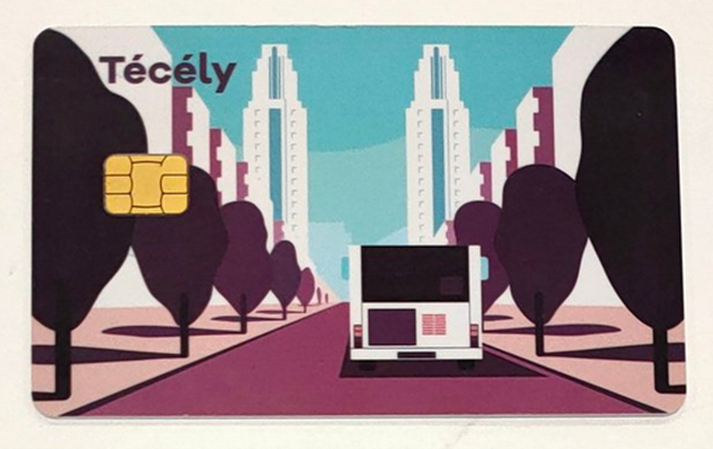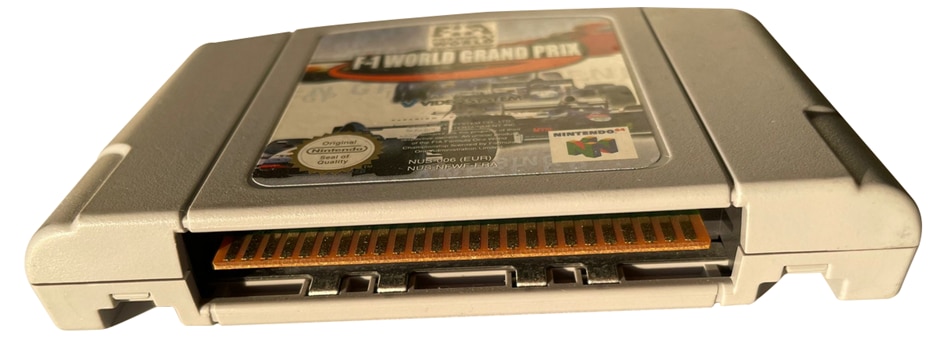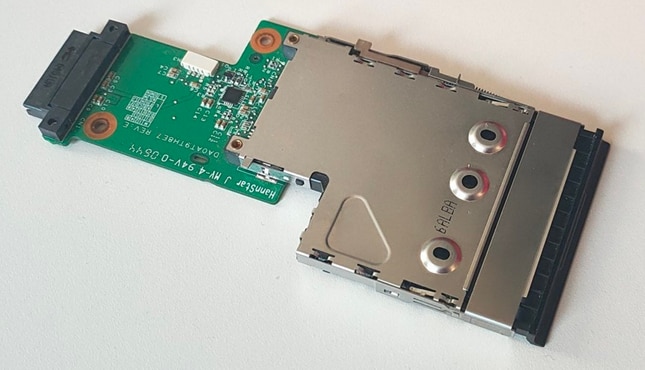Offline Memory Technology
By Baptiste Bouix
Part 5: Memory extensions
At the end of the 60s, the idea of using a chip of read-only memory as a key to unlock an electronic system or as an identification card was already introduced to replace magnetic tape-based identification cards. However, it is only in the middle of the 70s that the Smart Card, a microchip embedded in a plastic card of standardized dimensions with a 8-pad contact area was created. In 1987, the contact pads were standardized by the ISO/IEC 7816. The first mass use of the standardized Smart Card was a pocket wallet for payphones in France, but by the early 90s the banking sector also adopted them as debit or credit cards.

A smart card holding the Lyon public transport subscription. This smart card includes near-field communication
In 1973, R2E created the first microprocessor-based computer the micro-ordinateur, or microcomputer. By the end of the decade, progress made in available RAM and ergonomics made microcomputer usable even by non-trained scientists.
Cartridges
RAM was expensive and most of it was already used by the system display. The common storage of the time, tape cassettes, was too slow to run programs on, so the data on tape had to be loaded on even more RAM. To circumvent this issue and keep costs low, software were stored in ROM. Not all ROM was included in the computer, however. A new off-line storage device appeared: the ROM cartridge. ROM cartridges were made of a printed circuit board with a ROM chip soldered on a PCB and encased in a plastic shell. The cartridge has to be inserted into a dedicated slot.

A Nintendo 64 game cartridge with visible internal PCB edge board contacts.
ROM cartridges were holding all kinds of software, but were made popular by videogame consoles, computers and even arcade systems. In some cases, cartridges were not holding only ROM, but also hardware extensions like, RAM, microphones, cameras.
All those system were proprietary: there is no unifying standard for cartridge, and each brand of computer or console has its own.
Portable personal computers (laptops) became more prevalent in the 80s. On the other hand, desktop PCs were accommodating more and more peripherals due to ribbon cable connection and PCIe standardization. High-capacity hard disk drives were too massive to fit inside, as were optical or magnetic drives. The cartridge format was too thick to be accommodated as well, but could be made flatter: this was the birth of the PC card extension.
At first, card extensions could accommodate flash memory, ROM and RAM extensions, much like cartridges, but were also used to plug external devices that could hardly be accommodated by standard connectors: modems, external optical or magnetic drives, etc.
Laptop card extensions became largely obsolete by the end of the 2010s, with the advent of USB 2.0. Laptops are still sometimes equipped with much smaller memory card slots. Cartridges still exist for portable game consoles, but mostly use flash memory.


Nintendo DS cartridge, this proprietary cartridge format is only used for the Nintendo DS game console
The first modern card extension format was the Japanese JEIDA 1.0 Memory Card standard, a 3.3mm-thick 88-pin standard for memory cards created in 1985. It was a very popular standard for early laptops and notebooks. The PCMCIA was the competing US standard started in 1990. Both merged at the release of the JEIDA 4.1 and PCMCIA 2.0 in 1991. JEIDA/PCMCIA cards (or PC Card) were used for material and memory extension, replacing former proprietary card extension formats.
In 1997, a much more compact, low-pin-count format was launched by SanDisk and Siemens to offer an alternative to PCMCIA-based cards: the MultiMediaCard (MMC). This card had only 7 pins, and could only be used for flash memory data storage.
The ExpressCard replaced the PC Card from 2003 onwards, but by the time, I/O connector standards like USB and Thunderbolt were able to accommodate hardware extensions with high data rates, and flash memory cards had their own standards.

ExpressCard 54 PCIe module for laptop
Stay plugged!

